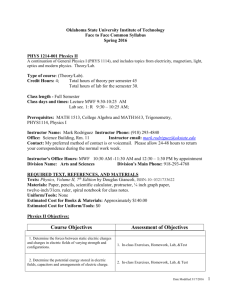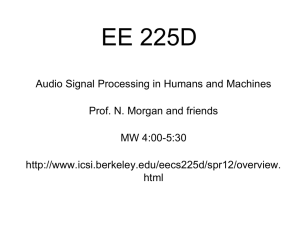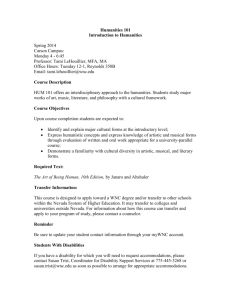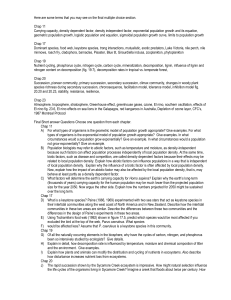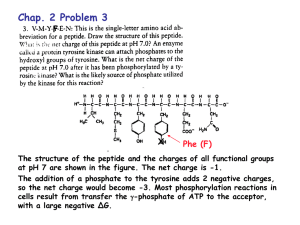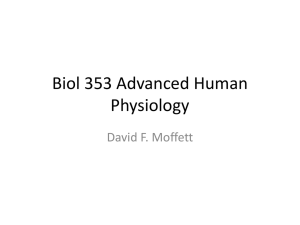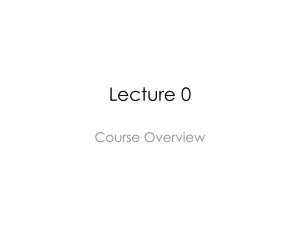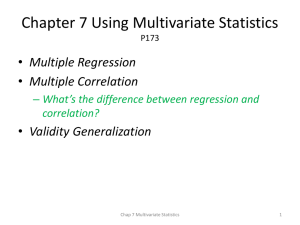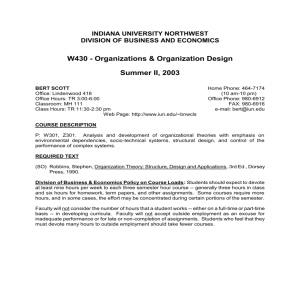PHYS 1114-001, 002, and 003 Physics I
advertisement
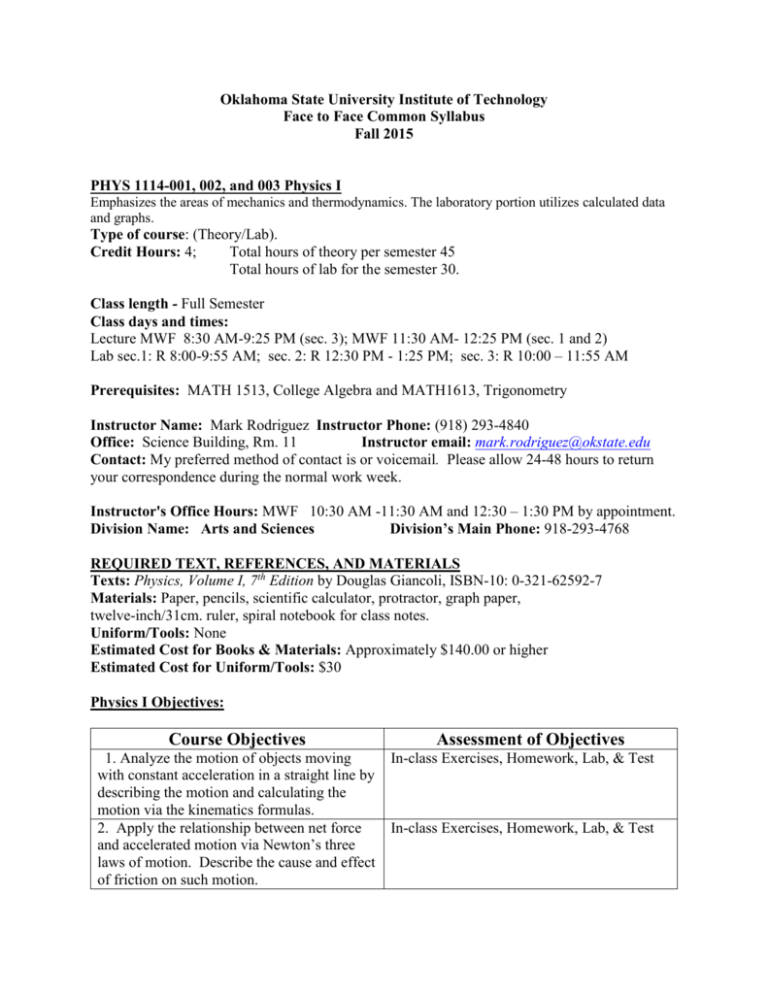
Oklahoma State University Institute of Technology Face to Face Common Syllabus Fall 2015 PHYS 1114-001, 002, and 003 Physics I Emphasizes the areas of mechanics and thermodynamics. The laboratory portion utilizes calculated data and graphs. Type of course: (Theory/Lab). Credit Hours: 4; Total hours of theory per semester 45 Total hours of lab for the semester 30. Class length - Full Semester Class days and times: Lecture MWF 8:30 AM-9:25 PM (sec. 3); MWF 11:30 AM- 12:25 PM (sec. 1 and 2) Lab sec.1: R 8:00-9:55 AM; sec. 2: R 12:30 PM - 1:25 PM; sec. 3: R 10:00 – 11:55 AM Prerequisites: MATH 1513, College Algebra and MATH1613, Trigonometry Instructor Name: Mark Rodriguez Instructor Phone: (918) 293-4840 Office: Science Building, Rm. 11 Instructor email: mark.rodriguez@okstate.edu Contact: My preferred method of contact is or voicemail. Please allow 24-48 hours to return your correspondence during the normal work week. Instructor's Office Hours: MWF 10:30 AM -11:30 AM and 12:30 – 1:30 PM by appointment. Division Name: Arts and Sciences Division’s Main Phone: 918-293-4768 REQUIRED TEXT, REFERENCES, AND MATERIALS Texts: Physics, Volume I, 7th Edition by Douglas Giancoli, ISBN-10: 0-321-62592-7 Materials: Paper, pencils, scientific calculator, protractor, graph paper, twelve-inch/31cm. ruler, spiral notebook for class notes. Uniform/Tools: None Estimated Cost for Books & Materials: Approximately $140.00 or higher Estimated Cost for Uniform/Tools: $30 Physics I Objectives: Course Objectives 1. Analyze the motion of objects moving with constant acceleration in a straight line by describing the motion and calculating the motion via the kinematics formulas. 2. Apply the relationship between net force and accelerated motion via Newton’s three laws of motion. Describe the cause and effect of friction on such motion. Assessment of Objectives In-class Exercises, Homework, Lab, & Test In-class Exercises, Homework, Lab, & Test 3. Define, calculate, and apply the concepts of work, energy, and power to real world problems. 4. Describe the cause and effect of centripetal motion (acceleration towards the center of a circular path) and calculate the magnitude of such. 5. Utilize impulse-momentum theory to calculate the change in an objects momentum. 6. State the two conditions of static equilibrium and calculate forces acting on a body in equilibrium. 7. Be able to apply simple harmonic motion to the study of spring and mass systems and simple pendulum systems and similar topics. 8. Describe accurately the concepts of horizontal and vertical velocity. 9. Develop an understanding of the acceleration due to gravity. 10. Measure distances using metric units 11. Use horizontal and vertical velocity, acceleration due to gravity and distance measurements to predict landing location of a projectile. In-class Exercises, Homework, Lab, & Test In-class Exercises, Homework, Lab, & Test In-class Exercises, Homework, Lab, & Test In-class Exercises, Homework, Lab, & Test In-class Exercises, Homework, Lab, & Test In-class Exercises, Homework, *Projectile Motion Lab, & Test In-class Exercises, Homework, *Projectile Motion Lab, & Test In-class Exercises, Homework, *Projectile Motion Lab, & Test In-class Exercises, Homework, *Projectile Motion Lab, & Test COURSE ACTIVITIES: In this course students will: Participate in lab exercises designed to strengthen understanding of physics concepts. Construct and analyze hand and computer-generated graphs of laboratory data. Become familiar with and utilize the kinematics equations to calculate motion of accelerating objects. State Newton’s three laws of motion. Use them to describe and calculate the cause of accelerated motion. Calculate the kinematics of circular motion. Describe the dynamics of the same and apply it to real world situations. Compare and contrast energy, work, and power. Perform calculations to determine the energy possessed or work done by an object. Calculate power of an object and convert to horsepower. Use impulse-momentum theory to calculate the net force acting on an object and the resulting change in its momentum. Calculate the forces and torques acting on a body in equilibrium. Define the different types of waves. Calculate wave properties such as wavelength, velocity, frequency, and period. Describe the three methods of heat transfer. Define and calculate specific heat. Use basic thermodynamic properties and equations to determine the change in temperature or internal energy of an object. GRADES WILL BE BASED ON THE QUALITY AND COMPLETION OF THESE TASKS: Homework and quizzes..10% Labs...………………….30% Unit Exams…………….60% OSUIT Grading Scale A = 90.00 - 100.00 B = 80.00 – 89.99 C = 70.00 - 79.99 D = 60.00 - 69.99 F = 00.00 - 59.99 IMPORTANT NOTE!!! ALL TEST SCORES COUNT. The lowest test score will not be dropped! *The student’s grade for the course will be used in the university’s assessment of student learning. A 70% competency or higher on selected exam components receives a Pass rating. This Pass/Fail rating is independent of the student’s course grade. Normal return time of graded work to students will be by the next class meeting or no later than one (1) week. INSTRUCTOR'S WORK POLICY Homework I do my best to grade in detail every problem you do for homework and often put notes on papers to help you see what you did wrong or how to do the problem correctly. This takes a fair amount of time so the following homework rules are followed in my classes. * All papers must have your full name AS ON YOUR STUDENT RECORD (no single names and no nick-names or aliases), course, section, date and assignment numbers as a heading. * All papers must have an answer column 1½ inches or wider running down the right- hand edge of each sheet. Answers go in this column, OPPOSITE the problem. * Any problems involving graphing will be done on ¼ square graph paper. If you are not sure if the problem needs to be on graph paper – use graph paper anyway. * Your work will be neat and easy to follow. If I think it looks too a messy or if I have difficulty following the work, then I consider it wrong. I don’t grade garbage. * Work problems in one column, one under each other. * Problems/questions are to be worked in the order of the syllabus/homework sheets and in assignment order. * Several days’ assignments may not be combined in one pack. Each day’s assignment is to be a separate, stapled pack. * All work will be securely stapled together. Loose pages can get lost! * All papers will have neat, straight edges. If you tear the pages out of a wire-bound book, trim the edges straight before turning it in. Fringes and ragged edges cause papers to become stuck together and papers ‘get lost’. * Papers violating any of these rules get an AUTOMATIC 0. In addition: Show all steps for problems on homework. NWNC means “No Work, No Credit!!!” When the answer to a problem is in the back of the book, any mistake on the problem will lose all credit! e.g. If the answer is there, you must work it out completely for yourself! You are to follow all directions in the book exactly. If it says ‘plot’, you graph. If it says ‘label points’, you label each point required. Make sure that you answer what’s being asked and answer all parts of the question. Work only one problem per horizontal area. Side by side problems will be ignored no matter how neat! Label all answers with units. If the problem asks for dollars, you use $. If it asks for degrees, you use o. Omission of units will result in a loss of points. Significant digits will be observed. Spelling counts on homework (but not on tests) INSTRUCTOR'S LATE WORK POLICY Homework is due at the beginning of class on the due date. Late homework is not accepted except: work turned in at the next class period will be graded and then suffer a 25% penalty. If unforeseen emergency or illness occurs, students will be allowed time to make up the work Below are six get out of jail free coupons which are used to avoid no credit for homework more than one period late or avoid zeros on up to 2 missed labs provided your grade is a C or higher. Cut one out and staple to the front of any late homework you want. Fill them out legibly with your name, what you want to dodge and the date of the late homework or missed lab assignment. Unused coupons are worth points on the last exam!! .DODGE THE BULLET 1 DODGE THE BULLET 2 __Homework/Lab Due Date ____________ __Homework/Lab Due Date ____________ NAME __________________________ (Print) Sign ___________________________ NAME __________________________ DODGE THE BULLET 3 DODGE THE BULLET 4 __Homework/Lab Due Date ____________ __Homework/Lab Due Date ____________ NAME __________________________ NAME __________________________ (Print) (Print) Sign ___________________________ (Print) Sign ___________________________ Sign ___________________________ DODGE THE BULLET 5 DODGE THE BULLET 6 __Homework/Lab Due Date ____________ __Homework/Lab Due Date ____________ NAME __________________________ NAME __________________________ (Print) Sign ___________________________ (Print) Sign ___________________________ UNIVERSITY & COURSE EXPECTATIONS As a student of OSUIT, I understand that it is my responsibility to read, abide by and maintain a copy of the syllabi for this course. Syllabi are also available on the OSUIT website. As a student of OSUIT, I understand that excerpts of portions of my work may be utilized for institutional assessment purposes. The purpose of institutional assessment is for verification of student learning and program improvement. I recognize that every effort will be made to keep this information confidential. AMERICANS WITH DISABILITIES ACT (ADA) According to the Americans with Disabilities Act, each student with a disability is responsible for notifying the University of his/her disability and requesting accommodations. If you think you have a qualified disability and need special accommodations, you should notify the instructor and request verification of eligibility for accommodations from the Office of Academic Accommodations/LASSO Center. Please advise the instructor of your disability as soon as possible, and contact The LASSO Center, to ensure timely implementation of appropriate accommodations. Faculty have an obligation to respond when they receive official notice of a disability but are under no obligation to provide retroactive accommodations. To receive services, you must submit appropriate documentation and complete an intake process during which the existence of a qualified disability is verified and reasonable accommodations are identified. The LASSO Center is located on the 3rd floor of the Noble Center. You may call 918.293.4855 for more information or fax documentation to918.293.4853. ACADEMIC DISHONESTY Academic dishonesty or misconduct is neither condoned nor tolerated at OSUIT. Any student found guilty of academic dishonesty or misconduct shall be subject to disciplinary action. Academic dishonesty and/or misconduct includes, but is not limited to, the following actions: (1) Plagiarism: the representation of previously written, published, or creative work as one’s own; (2) Unauthorized collaboration on projects; (3) Cheating on examinations; (4) Unauthorized advance access to exams; (5) Fraudulent alteration of academic materials; (6) Knowing cooperation with another person in an academically dishonest undertaking. Students are required to actively protect their work against misuse by others. For details, refer to The OSUIT Student Handbook (Student Rights and Responsibilities Governing Student Behavior) available online at http://www.osuit.edu/academics/forms/student_rights_responsibility.pdf. ATTENDANCE POLICY FOR FACE TO FACE COURSES A primary component of OSUIT's Mission is “to prepare and sustain a diverse student body as competitive members of a world-class workforce.” Regular and consistent attendance not only aids in academic success, dependable attendance is a requirement in today's real-world employment; therefore, regular and consistent attendance is a requirement in all OSUIT courses. Definitions: Absent: Failing to attend all or a significant portion of a class or lab session. A. Students may not be marked as absent if missing class for situations such as, but not limited to 1. participating in a required university activity such as a field trip; 2. fulfilling a military obligation; 3. a mandatory court appearance; 4. death in the immediate family; 5. extreme illness or accident to oneself or immediate family. Instructors, at their discretion, may require proof of such events. B. It is the responsibility of the student to contact and inform the instructor and/or department in advance of such excused absences whenever possible. Tardy: Arriving late to class as defined by the individual class instructor. Faculty, at their discretion, may equate three tardies to equal one absence. Procedures: Early Intervention A. Any student who misses 10% of an individual course (or earlier at faculty discretion) during a regular fifteen-week semester, or the equivalent portion of time in a shorter session, will have their name submitted by that course instructor to the OSUIT Early Alert System for retention intervention. B. At the point the Early Alert is issued, the student must meet with their assigned faculty advisor or designated faculty/staff member within seven (7) academic calendar days for counseling on how to improve their attendance and academic success. Excessive Absences A. The University reserves the right to administratively withdraw any student from an individual course who misses 20% of that course, whether excused or unexcused, and, in the opinion of the instructor, the student does not have a reasonable opportunity to be successful in the course. B. Students should be aware any of the following may impact their financial aid: 1. being administratively withdrawn from a course 2. dropping a course 3. their last date of attendance in a course Please see OSUIT Policy 2-021 for full details and procedures. Course Schedule: Physics I Week 1 2 3 4 5 6 7 8 9 10 11 12 13 14 15 Assignments to complete Begin Chapter 1; Pendulum Lab; Math Pretest Cont. Chap. 1; Density Lab; Homework Homework; Chap.1 Test; Begin Chap. 2; Acceleration of “g” Lab. Cont. Chap. 2; Homework ; Freefall Lab. Chap. 2 Test; Begin Chap. 3; Vector Lab.; Homework Cont. Chap. 3; Projectile Motion Lab; Homework Chap. 3 Test; Begin Chap.4; Dynamics Lab; Homework Cont. Chap. 4; Friction Lab.; Homework Begin Chap. 5; Centripetal Force Lab.; Homework Cont. Chap 5; Gravitation Lab; Homework Chap. 4 & 5 Test; Begin Chap. 6; Work Lab.; Homework Cont. Chap. 6; Conservation of Energy Lab.; Homework Chap. 6 Test; Begin Chap. 7; Conservation of Momentum Lab.: Homework Begin Chap.11; Simple Harmonic motion Lab.; Homework Chaps. 7 & 11 Test; Summary of Chaps. 8, 13, and 14. Oklahoma State University Institute of Technology PHYS 1114 (Physics I) Fall 2015 I have read and understand this syllabus, and agree to abide by the policies, procedures and guidelines specified therein. ___________________________________ Printed Name ______________________________________ Student ID Number (this is not your SSN) Oklahoma State University Institute of Technology PHYS 1114 (Physics I) Fall 2015 Student Assessment Release I agree that Oklahoma State University Institute of Technology may excerpt some of my work to be utilized for institutional assessment purposes. The purpose of institutional assessment is for verification of student learning and program improvement. I recognize that every effort will be made to keep this information confidential and that my name will not be associated with my work. ___________________________________ Printed Name ______________________________________ Student ID Number (this is not your SSN) ___________________________________ Signature ______________________________________ Date
